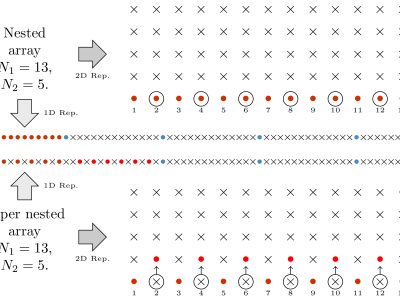Documents
Presentation Slides
Super Nested Arrays: Sparse Arrays with Less Mutual Coupling Than Nested Arrays

- Citation Author(s):
- Submitted by:
- Chun-Lin Liu
- Last updated:
- 26 March 2016 - 8:38pm
- Document Type:
- Presentation Slides
- Document Year:
- 2016
- Event:
- Presenters:
- Chun-Lin Liu
- Paper Code:
- SAM-L5.1
- Categories:
- Log in to post comments
In array processing, mutual coupling between sensors has an adverse effect on the estimation of parameters (e.g., DOA). Sparse arrays, such as nested arrays, coprime arrays, and minimum redundancy arrays (MRAs), have reduced mutual coupling compared to uniform linear arrays (ULAs). With $N$ denoting the number of sensors, these sparse arrays offer $O(N^2)$ freedoms for source estimation because their difference coarrays have $O(N^2)$-long ULA segments. These arrays have different shortcomings: coprime arrays have holes in the coarray, MRAs have no closed-form expressions, and nested arrays have relatively large mutual coupling. This paper introduces a new array called the super nested array, which has all the good properties of the nested array, and at the same time reduces mutual coupling significantly. For fixed $N$, the super nested array has the same physical aperture, and the same hole-free coarray as does the nested array. But the number of sensor pairs with separation $\lambda/2$ is significantly reduced. Many theoretical properties are proved and simulations are included to demonstrate the superior performance of these arrays.

